I know I’m prone to calling every houseplant “striking” and “spectacular,” but rarely is it ever more true! Let me introduce you to Stromanthe ‘Triostar,’ a delightful multicolored prayer plant species that really lends an exotic touch to your home. Some indoor gardeners struggle with this species, but don’t worry; with the right care, it can absolutely thrive in your home.
Here’s everything you need to know about Stromanthe ‘Triostar’ care and how to grow this stunning prayer plant indoors.
| Common name(s) | Triostar Stromanthe, tricolor prayer plant, magenta Triostar, Calathea Triostar |
| Scientific name | Stromanthe sanguinea, sometimes Stromanthe thalia or Ctenanthe sanguinea |
| Family | Marantaceae |
| Height and spread | Up to 6 feet tall and wide |
| Light | Bright indirect |
| Soil type | Rich but well-draining |
| Water | Keep lightly moist |
Disclosure: If you shop from my article or make a purchase through one of my links, I may receive commissions on some of the products I recommend.
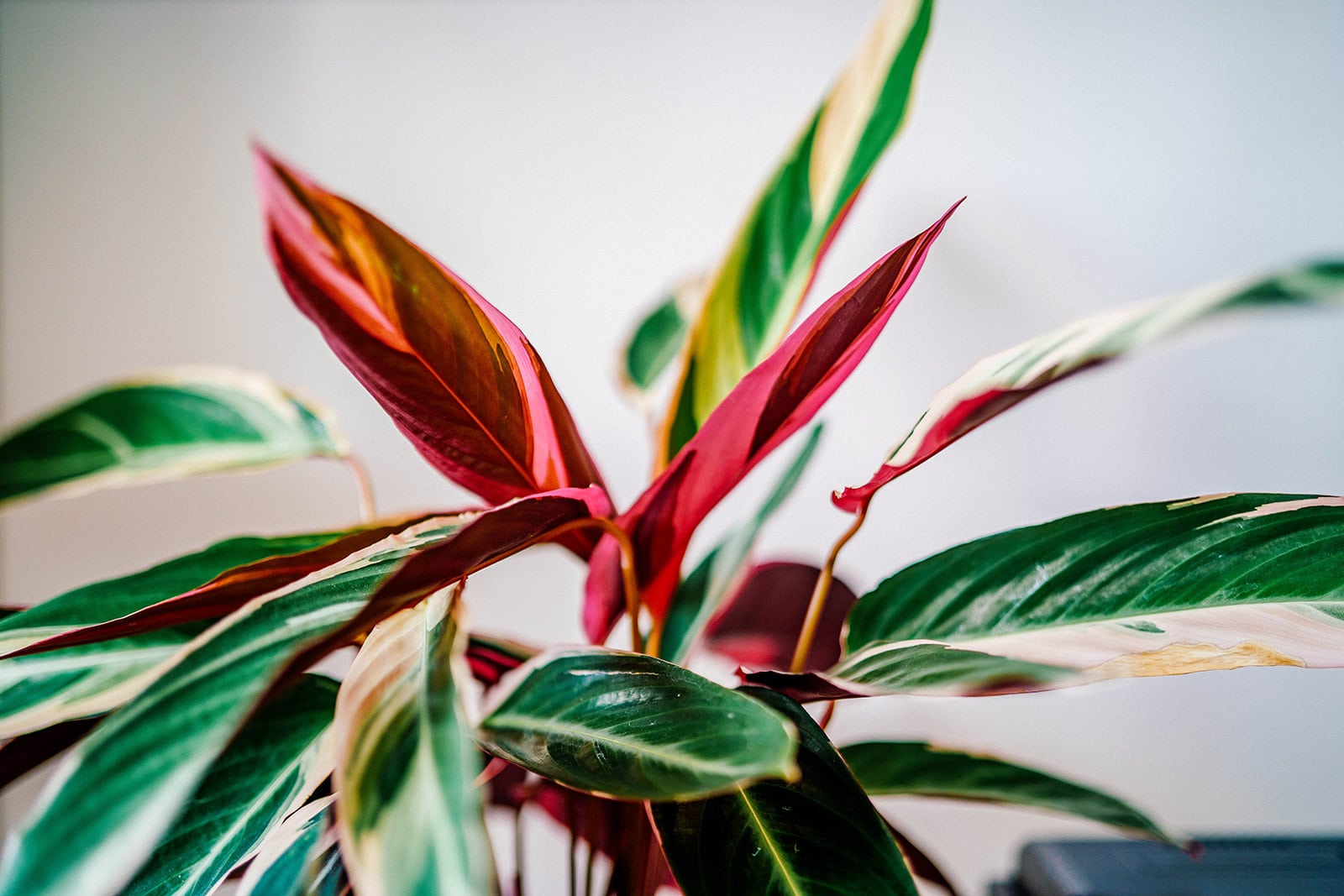
About Stromanthe ‘Triostar’
Natural habitat
Stromanthe ‘Triostar,’ the pink and green plant you’ll find at your local plant store, technically doesn’t exist in the wild. It’s a cultivar of a wild member of the genus Stromanthe, which has green leaves with purple backs and lacks those typical pink splashes.
Stromanthe is a member of the Marantaceae family, which also includes popular houseplant genera like Calathea, Ctenanthe, and Goeppertia. (And if you’ve read my other houseplant guides, you might remember that many Calatheas out there, such as Calathea ornata, were recently reclassified as Goeppertia—but most nurseries haven’t caught on to the name change yet.)
Although the plant in question is widely known as Stromanthe sanguinea, I actually stumbled upon some taxonomic confusion while researching it. Some credible sources, including the Kew database, insist its correct name is Stromanthe thalia. (I haven’t been able to figure out who is in the right.)
Sometimes it’s also called Stromanthe ‘Tricolor’ by local growers, though all these names refer to the same plant with tricolor (pink, green, and white) coloration.
Whatever its name, the plant’s wild form is naturally found in the Brazilian rainforest understory, including the Atlantic Rainforest, which is home to many of our favorite tropical houseplants (including Maranta leuconeura, Calathea makoyana, and Begonia maculata). It can be found in both mountainous and lowland jungles, always with high average temperatures and high humidity levels.
Did you know?
In the wild, Stromanthe isn’t just pollinated by bees. Hummingbirds also love its flowers (especially when no other flowers are in bloom—if that’s the case, feeders filled with hummingbird food can help).
Description
As mentioned, Stromanthe ‘Triostar’ really is a striking houseplant. It’s a rhizomatous perennial with elongated green leaves that are mottled with vibrant splashes of pastel pink. The leaf undersides are deeper pink to purple in color, which is truly stunning when the sun shines through them. The stems are also pink.
(As an aside, pink is a pretty hot color in the houseplant world right now when it comes to foliage—for instance, Philodendron ‘Pink Princess’, whose popularity has exploded on social media—and this tricolor prayer plant is, not surprisingly, very in-demand.)
Stromanthe ‘Triostar’ is usually sold in small containers, but with the right care, this plant can become fairly tall and wide, up to 6 feet! Its leaves grow larger as it matures. Because it’s a member of the prayer plant family, the species “prays,” folding up its leaves at night.
Did you know?
Prayer plants aren’t the only plants that fold their leaves in “prayer.” Another nyctinastic plant that’s popular as a houseplant is Oxalis triangularis (also known as false shamrock or purple shamrock). Watch how its leaves fold up in the dark!
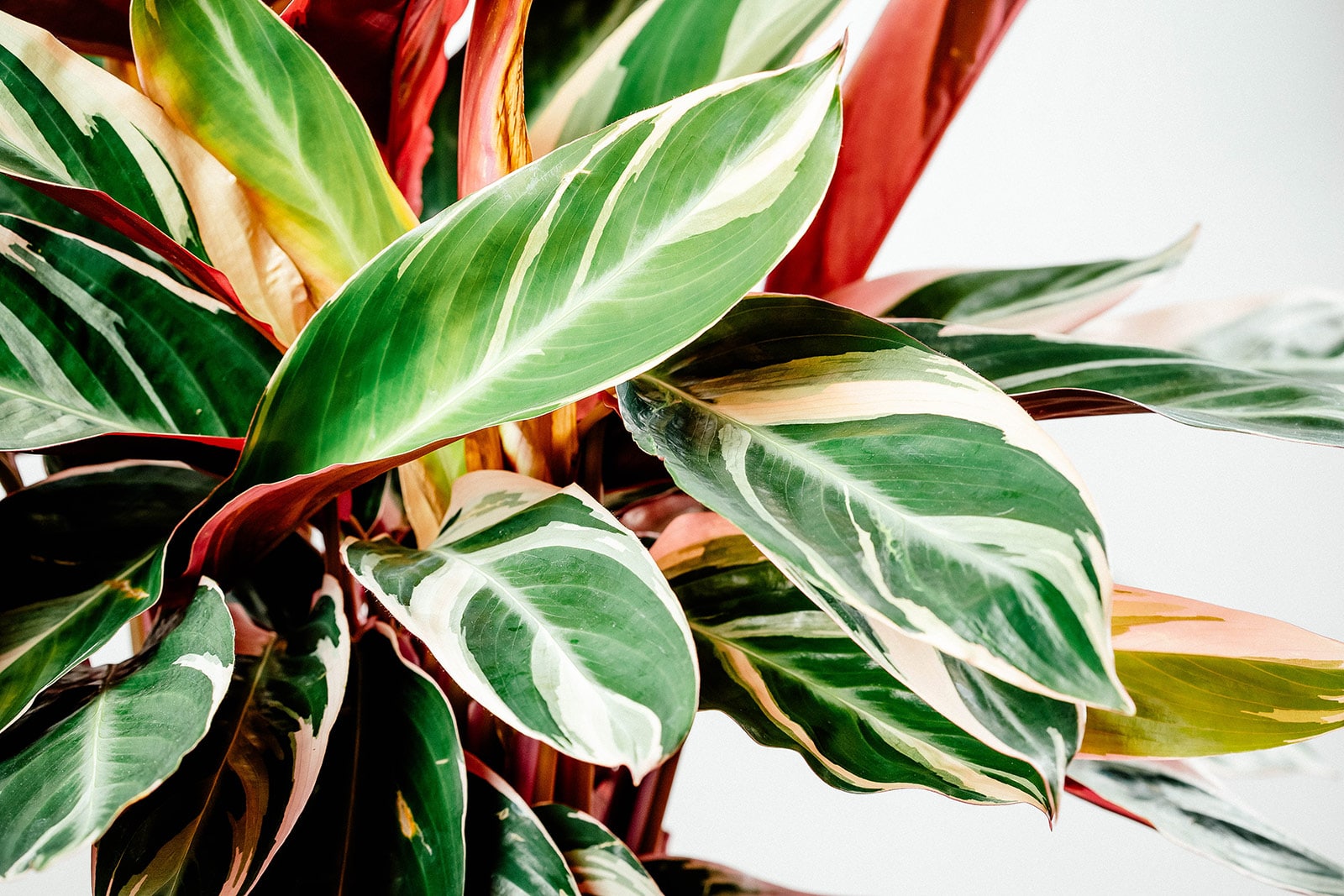
Stromanthe sanguinea varieties
Although Stromanthe ‘Triostar’ is undoubtedly the one you’re most likely to come across locally, I did actually find two other cultivars of this plant.
- Stromanthe ‘Stripestar’: Light green to white leaf midvein and light leaf striping, no pink splashes.
- Stromanthe ‘Valmic’: Bred from ‘Stripestar.’ Characterized by white/cream leaf variegation. I don’t see it for sale anywhere.
Aside from these cultivars, there’s also the wild form. I haven’t found that one for sale either, but you may be able to find it through Marantaceae enthusiast groups if it really interests you.
Where to buy
Stromanthe ‘Triostar’ plants
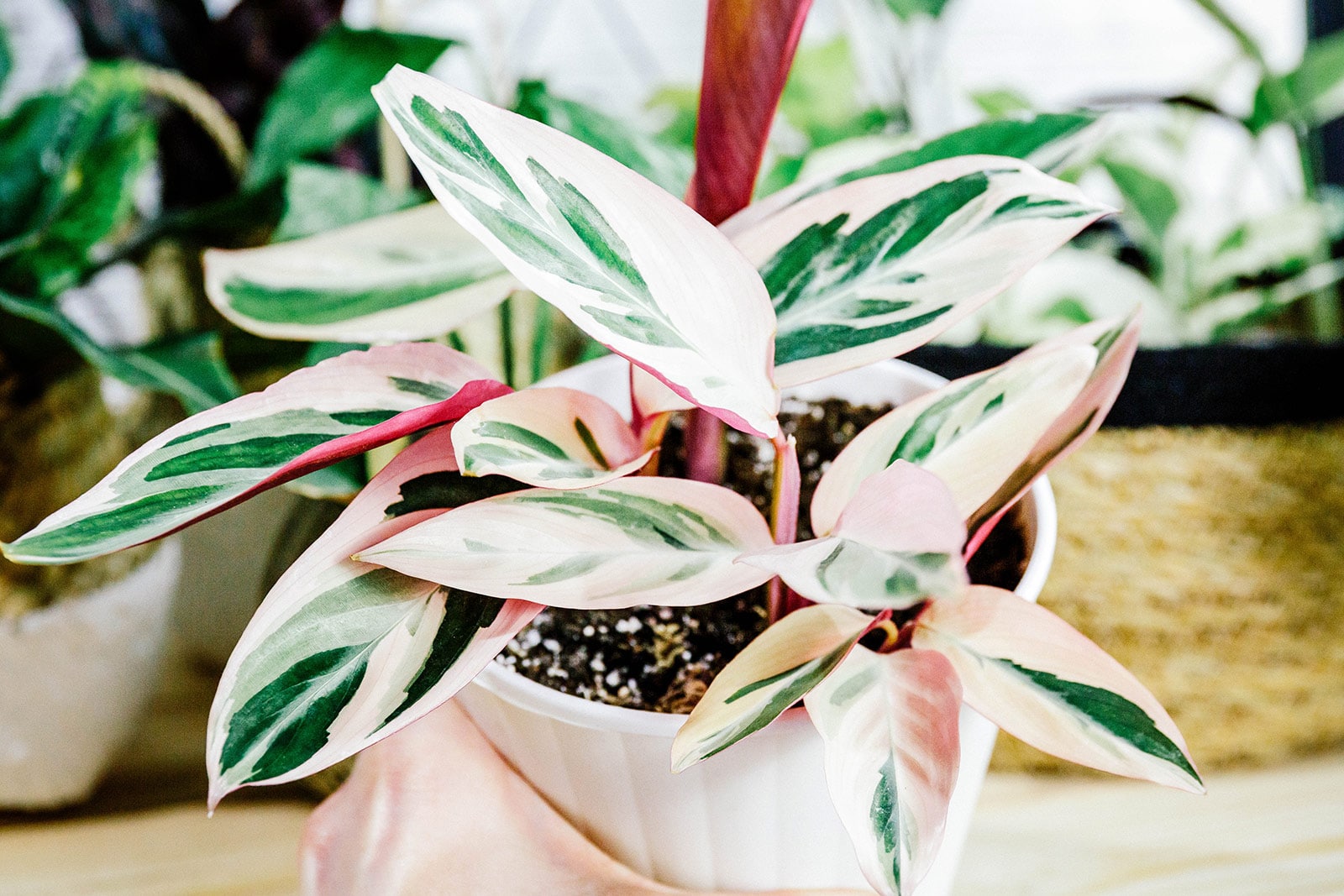
Caring for Stromanthe ‘Triostar’
Light and temperature
As with other tropical but variegated plants, finding the right light balance for your Stromanthe ‘Triostar’ is important. As mentioned before, this species naturally forms part of the rainforest undergrowth, meaning it isn’t used to receiving overly harsh direct sun. Its delicate leaves can burn, especially without proper acclimation.
On the other hand, providing mottled plants like this one with too little light is a recipe for your foliage friend losing its wow factor! As a response to the lack of light, newer leaves will come out with a higher percentage of green as the plant tries to maximize its photosynthesis efficiency.
Luckily, this can be reversed, and it’ll start putting out more strongly variegated leaves again if you move it back to a higher-light position.
The ideal location for your Stromanthe ‘Triostar’ is a spot next to a window, but not one that receives strong afternoon sun. Try to avoid drafty and chilly windowsills, because tropicals like this one really don’t like the cold!
When it comes to temperature, if you’re feeling comfortable in your home, your Stromanthe should be as well. Try not to let things drop below 59°F, as it’ll definitely stop growing at this point and might even shed foliage in response to the cold. Higher temperatures are no problem, especially if the air humidity is nice and high. That’s what they’re used to, after all.
Water and humidity
Just like with light, watering Stromanthe ‘Triostar’ is a matter of striking a balance. As a matter of fact, the two are related. The more light your plant gets, the more water it needs, and the less susceptible it is to watering-related issues (unless you forget it, which happens to the best of us!).
Marantaceae like this one love some moisture, but they really dislike standing water. Wet feet can quickly cause root rot, which is often fatal for the plant. I can’t tell you how often you have to water your plant, as this depends on the environment, but it should be kept lightly moist.
During the warm summer months your tricolor prayer plant may need to be watered twice a week or even more, while in the inactive winter period, you may be able to leave it for almost two weeks. If you’re not sure, stick a finger in the soil: dampness means you can wait another day or two.
Another important factor for Stromanthe ‘Triostar’ care is humidity. This jungle plant really doesn’t like dry air, which can be problematic as the air moisture levels in our homes can get pretty low. If your humidity meter reads less than 50 percent consistently, it may be a good idea to run a humidifier to prevent brown tips and a cranky plant.
Soil and planting
Stromanthe ‘Triostar’ appreciates a rich soil type, but not one that gets easily waterlogged. As always with this plant, it’s about finding a balance, in this case between drainage and moisture retention.
I’ve had good experiences with growing Marantaceae, including this one, in a peaty potting soil with some perlite mixed in. If you can’t find perlite, you can also use pumice, crushed volcanic rock, or a similar medium that helps keep the mix light and airy.
The planter should always have a drainage hole, as excess water can’t be left soaking the soil and roots. I recommend steering clear of a terracotta pot unless you’re notorious for overwatering, because the porous material may cause the soil to dry out too quickly. Anything else is fine.
Some indoor gardeners even like to grow smaller specimens of Stromanthe ‘Triostar’ in a terrarium set-up, as this makes it easier to provide the humidity this plant craves.
Recommended products for Stromanthe plant care:
- Good Earth Organics Premium Potting Soil
- FoxFarm Ocean Forest Potting Soil
- Perfect Plants Organic Perlite
- Nature’s Footprint Pumice Soil Amendment
- ThermoPro Digital Hygrometer
Fertilizing
This isn’t a heavy feeder, but it can definitely benefit from the regular application of a balanced liquid houseplant fertilizer during the spring and summer growing months. If your Stromanthe ‘Triostar’ is happily chugging along and putting out plenty of new foliage, you can apply some fertilizer once a month or so during watering.
Stop fertilizing your houseplants during the dormant winter months or if they’re not doing well. It won’t give them a boost; it’ll just damage the roots and cause (further) problems.
Recommend fertilizers for Stromanthe:
- Houseplant Resource Center Liquid Fertilizer for Houseplants
- Instant Biologics Instant Plant Food (Fizzing Nutrient Tablets)
- Maxsea All-Purpose Seaweed Plant Food
Pruning
The only pruning you’ll have to do on your Stromanthe ‘Triostar’ is removing dead foliage once in a while. After all, it’s normal for a plant to shed its older foliage as new leaves pop up, just as long as it doesn’t happen at an alarming rate.
Sometimes the edges of the leaves may turn crispy and brown (a result of underwatering). If that’s the case, and you’ve corrected the watering issue, you can simply trim off the brown edges with a clean pair of scissors. Just follow the natural shape and curve of the leaf.
Dividing or repotting
Has your Stromanthe ‘Triostar’ outgrown its current planter? Good job, many indoor gardeners struggle with this plant. Give yourself a pat on the shoulder on my part!
But what to do now? Should you go up a pot size, or divide your plant into multiple?
It’s all a matter of personal preference with Stromanthe ‘Triostar,’ as this species lends itself well to both approaches. I usually prefer to repot and see how big my plant can get—a huge Stromanthe really is quite a sight to see. The leaves increase in height and size, while the plant spreads sideways as well due to its clumping growth pattern.
Still, you can absolutely opt to divide if you’d rather go for that. It’s a good solution if you’re short on space or want some more plants to keep or give away. Just have a look at the section on propagation below to learn more.
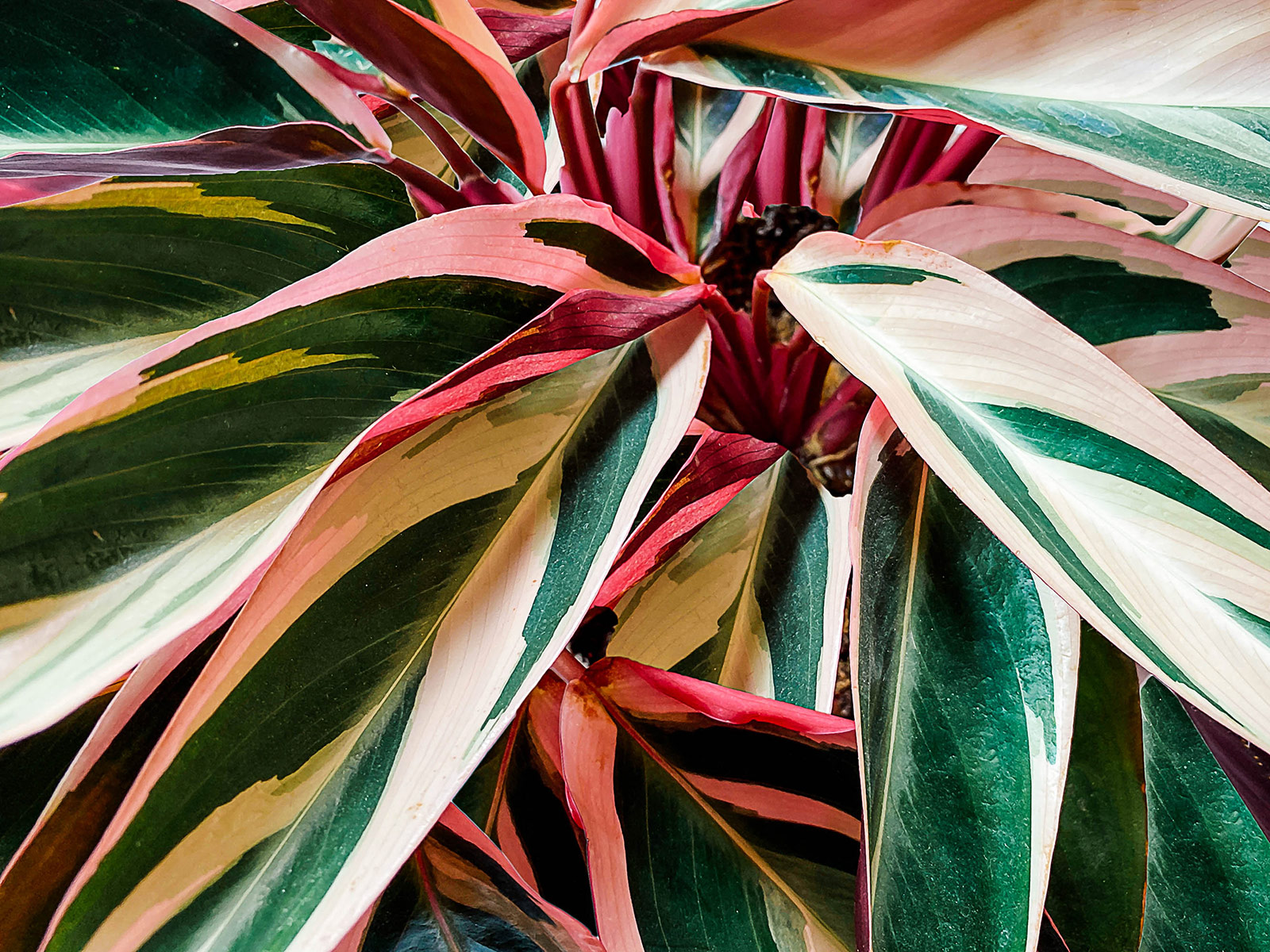
Propagating Stromanthe ‘Triostar’
Most prayer plants, including this one, unfortunately can’t really be multiplied using the tried-and-true method of taking stem cuttings. I’ve seen a few photos of people who managed to coax roots out of a stem or leaf cutting, but I have no idea if the plant thrived after that or not.
Fear not, though: You’ll still be able to propagate Stromanthe ‘Triostar’ just fine. You’ll just have to divide the plant instead of taking cuttings.
Dividing a houseplant is done by first taking it out of its planter. At this point, different clumps may already come loose, in which case you don’t have to do anything else. If they’re all stuck together, use a clean knife to cut vertically through the base. Make sure each section has some roots and leaves.
Once you’ve separated the clumps, all you have to do is pot up each section using your normal Stromanthe potting soil mixture. Keep the soil lightly moist. The new plants may look a bit grumpy at first due to their root system being so thoroughly disturbed, but they usually bounce back just fine after a few weeks.
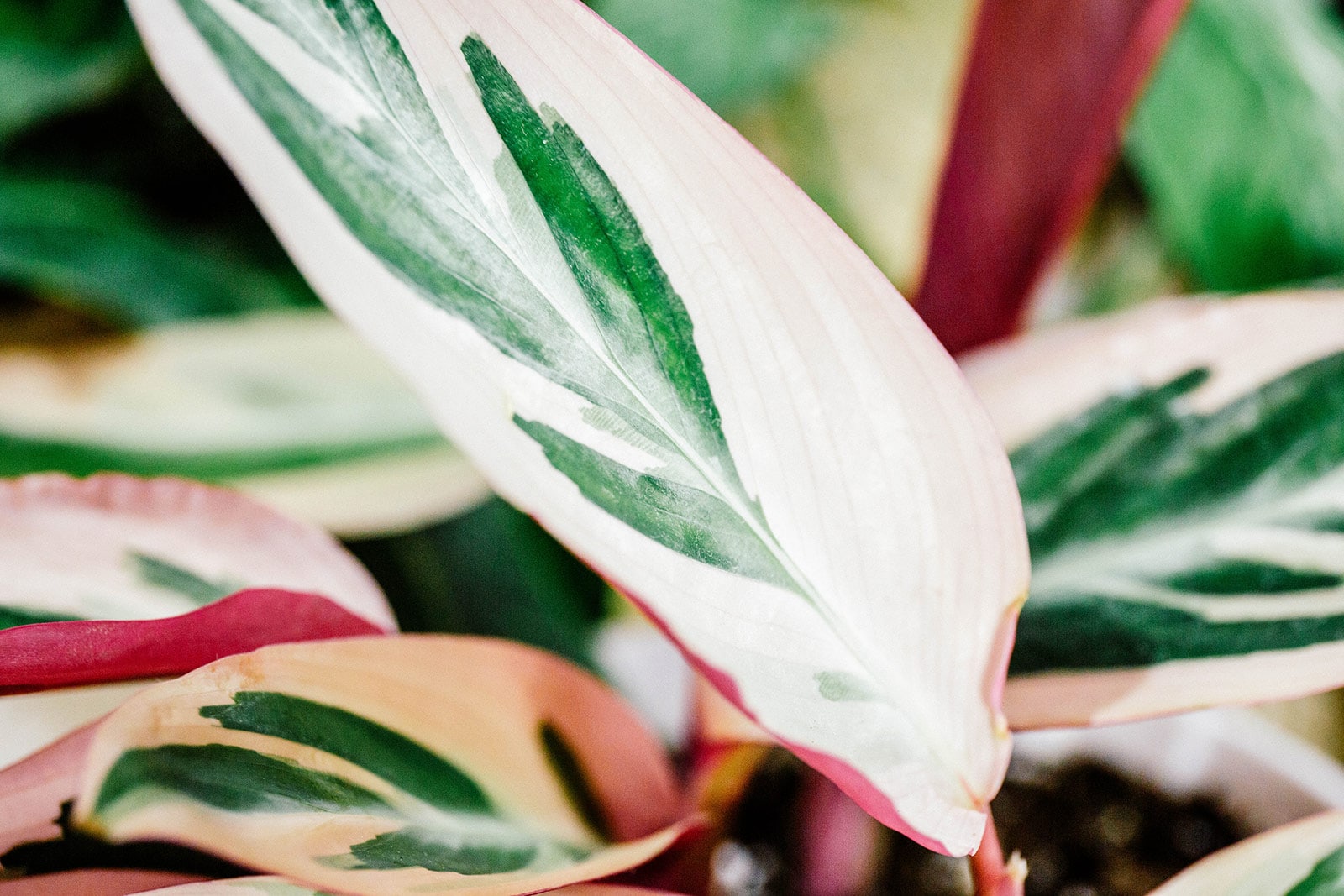
Common questions about Stromanthe ‘Triostar’ care
Why are my Stromanthe ‘Triostar’ leaves curling?
Typical of other prayer plants—and its origins in the Brazilian jungle—Stromanthe ‘Triostar’ shows stress in its leaves when it isn’t receiving the moisture it needs. Common reasons why your tricolor prayer plant may be curling its leaves include low humidity, underwatering, or water quality.
Some of the minerals found in tap water (like chlorine, fluoride, and hard salts) may cause your prayer plant to become stressed and exhibit curling leaves.
Why are my Stromanthe ‘Triostar’ leaves turning brown?
If the edges of the leaves on your Stromanthe ‘Triostar’ look brown and crispy, you may be underwatering your plant. You can remedy this problem by saturating the soil with water and letting it drain thoroughly before putting your plant back in place. A good misting (or a light shower in the sink or bathtub) can also help if your plant is too dry overall.
Why are my Stromanthe ‘Triostar’ leaves turning yellow?
Pale and yellowing leaves on a Stromanthe ‘Triostar’ are often the result of overwatering. Even though this tropical houseplant likes moisture, it doesn’t want too much moisture. Only water your plant when the first inch or two of soil feels dry, and make sure the water flows freely out of the drainage hole after each watering.
Sometimes, pale leaves are indicative of lack of light. Stromanthe ‘Triostar’ prefers bright, indirect light, and if it’s not getting enough of it, the leaves may start to yellow and take on a lackluster tone overall.
Try moving your plant to different areas inside your home to find the right balance of natural light throughout the day.
Can Stromanthe ‘Triostar’ grow outside?
In the warmest climates, USDA hardiness zones 9 and above, Stromanthe ‘Triostar’ can grow outdoors in a spot that gets only morning sun or all-day partial sun. It can take more sunlight in cooler areas. Gardeners in zones 8 and below can grow Stromanthe outside as an annual, or in a container that’s overwintered indoors before the first frost.
Is Stromanthe toxic to cats and dogs?
No! Plants from the Marantaceae family are not toxic to pets or humans. No need to worry if your furry friend likes to sample your houseplants. I won’t be making Stromanthe salads, but one scientific source I read actually mentions the leaves being edible.
Sources:
- https://patents.google.com/patent/USPP15475P2/en?q=stromanthe&oq=stromanthe
- https://powo.science.kew.org/taxon/urn:lsid:ipni.org:names:1211666-2
- Santo, A. D. E., & Pugialli, H. R. L. (1998). Estudo da plasticidade anatômica foliar de Stromanthe thalia (Vell.) JMA Braga (Marantaceae) em dois ambientes de Mata Atlântica. Rodriguésia, 50, 109-124.


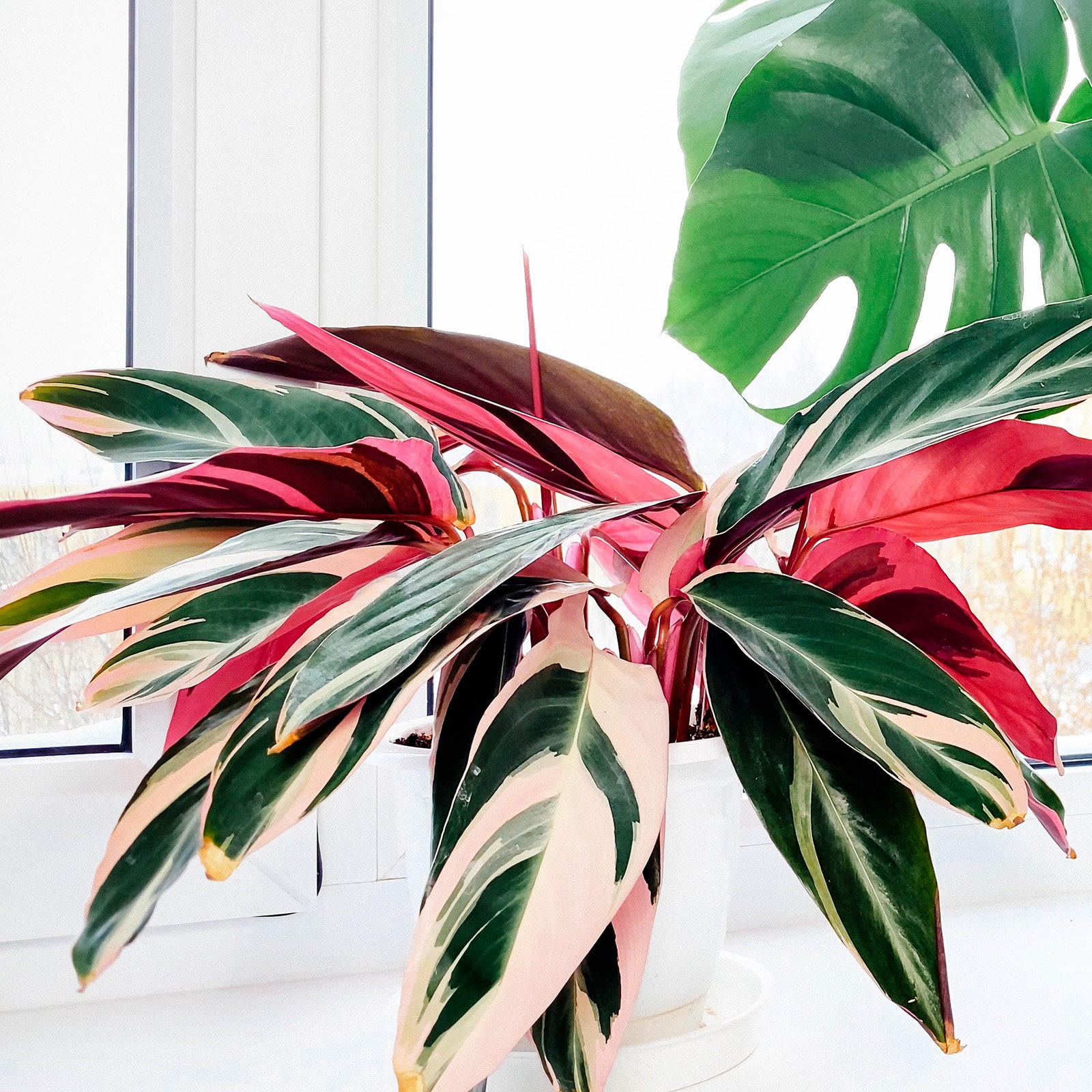













My leaves are growing with creamy instead of pink-white variegation. The plant itself is continuously putting out leaves. They just don’t have the bright pink-white anymore. The leaf backsides are still deep pink. I have heavily treated water. The plant is about 5-7 feet away from a southern window. The humidity isn’t as great as the house I had it in before (we moved over a year ago). It also might need repotting. It’s grown very large.
I repotted my calathea triostar and after a few days almost all the leaves started curling and browning. I am afraid the plant will die.. The soil is moist and I am not sure what to do. It looks really bad at the moment. Thanks in advance!
Very helpful. I have one and now understand why the tips are brown and curling. Thanks!
You’re welcome!